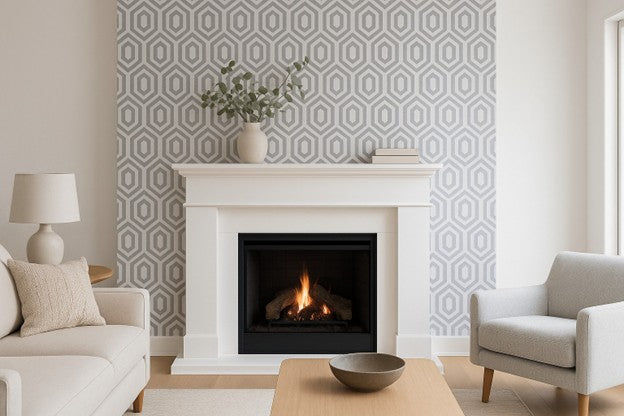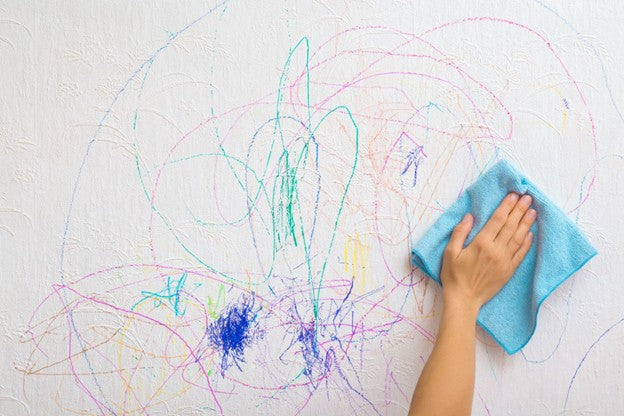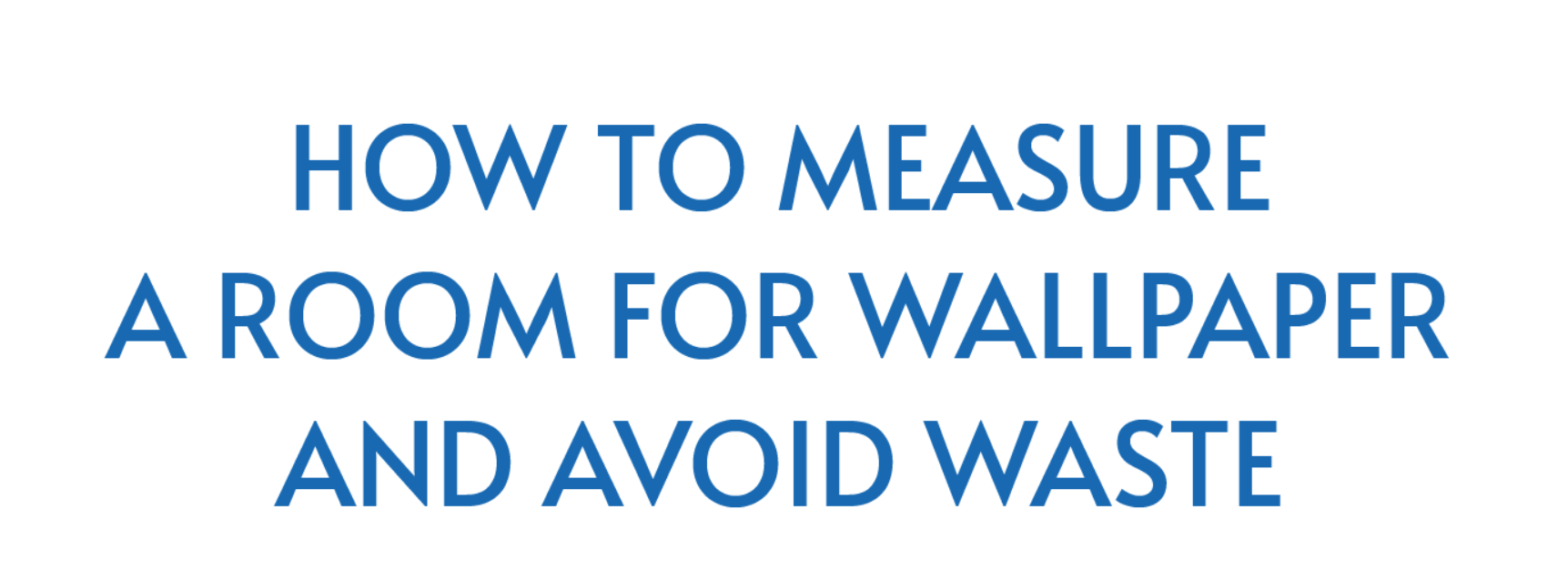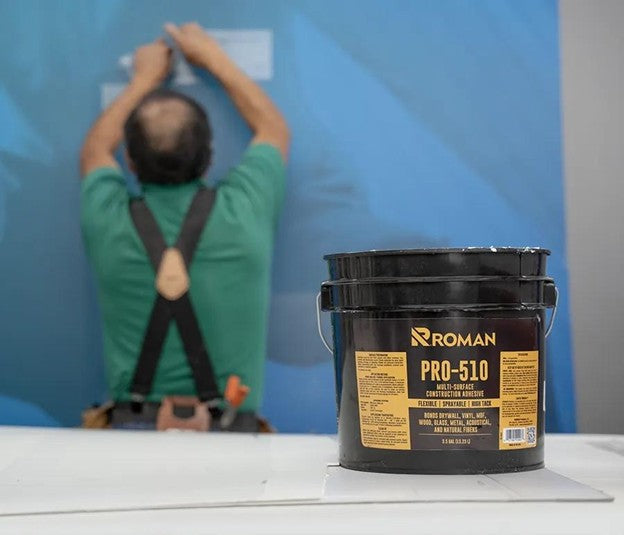
Cork wallpaper is becoming a popular choice in interior design due to its unique texture, eco-friendly appeal, and natural aesthetic. As people look to incorporate sustainable materials into their homes, cork wallcovering offers an ideal solution.
Made from the bark of cork oak trees, cork wallpaper is both renewable and durable, adding warmth and character to any space. Whether you're creating a feature cork wall in a living room or accenting smaller areas, this type of wallpaper can go a long way toward elevating your room’s style.
In this guide on how to hang cork wallpaper, we’ll explore everything from preparation and adhesive selection to installation tips, so you can create a beautiful, lasting design in your home.
Advantages of Cork Wallpaper
Choosing cork wallpaper offers several unique advantages that go beyond typical wallcoverings. It is especially noted for its sustainability—cork can be removed from the bark of a cork oak tree without damaging the tree itself, making it a renewable resource.
Cork wallpaper also provides natural insulation benefits. Its dense structure means it is an excellent choice for both soundproofing and thermal insulation, enhancing energy efficiency and reducing noise between rooms. Furthermore, cork’s texture adds a cozy feel to any space.
In addition to the above, cork wallpaper offers:
- Moisture resistance
- Hypoallergenic and anti-microbial properties
- Fire resistance
- Durability and longevity
- Easy maintenance
For design flexibility, cork wallpaper is available in both cork rolls or cork sheets and can be used in various applications, from full walls to accent areas. The natural patterns and tones of cork offer a sophisticated look that pairs well with a range of styles, whether you’re aiming for a modern, rustic, or minimalist look. This allows cork wallpaper to complement many design schemes.
Preparing for Installation

Proper preparation is essential for achieving a smooth, long-lasting cork wall installation. Start by preparing the wall surface to ensure the best results—cork wallpaper requires a clean, dry, and smooth surface for maximum adhesion. Any imperfections or dirt can interfere with the bonding process, so it’s important to patch holes, smooth out rough spots, and remove dust or debris from the wall.
Next, apply a primer to create a sealed, even base. This step is especially important, as it helps the cork adhesive grip effectively while protecting the wall beneath. Using a high-quality primer will prevent moisture-related issues that can arise over time. For this step, a reliable primer like ROMAN’s PRO-999 Rx-35 is ideal, as it creates a solid foundation for cork sheets.
Finally, gather the right tools for installation, including:
- Plastic smoothing tool
- Seam roller
- Utility knife
- Measuring tape
Selecting the Right Adhesive
Choosing the best adhesive for cork is essential to ensure a secure and durable bond. Cork can be a heavier material than traditional wallpaper—although this depends on the specific variety of wallcovering you have—so it generally requires a strong adhesive that can handle its weight and texture. For most cork installations, a professional-grade adhesive like ROMAN’s PRO-880 Ultra Clear is recommended. This adhesive offers superior bonding power and easy application.
When applying the adhesive, make sure to follow the manufacturer’s instructions for coverage and drying time. An even coat across the back of the cork wallcovering is important, as uneven application can lead to bubbles or areas where the wallpaper lifts from the wall.
The Installation Process
Begin by measuring your wall accurately and cutting the cork sheet to fit, leaving 2-3 inches of extra material at the top and bottom for precise trimming. Since cork wallpaper often has a natural pattern, it’s vital to align the pieces carefully if you expect to achieve a unified cork wall design.
Next, apply a thin, even layer of adhesive to the back of the cork wallpaper. If you’re using a heavier cork wallcovering, allow the adhesive to set briefly before positioning the sheet on the wall. Start at the top of the wall and work your way down, pressing the wallpaper into place as you go. Use a plastic smoothing tool to remove any bubbles and ensure the wallpaper adheres evenly, especially around the edges.
As you align each sheet, take care to match the seams precisely. Cork’s texture can make seams more noticeable, so use a seam roller to lightly press down the edges and create a seamless finish. Once each section is applied, trim the excess at the top and bottom with a utility knife for a clean look.
Post-Installation Tips and Maintenance

Once your cork wallcovering is installed, maintaining it is relatively easy, but a few precautions will help keep it looking its best. Cork is a naturally resilient material, but it’s still important to avoid exposing it to excessive moisture, as this can weaken the adhesive over time. For spaces like kitchens or bathrooms, ensure there is adequate ventilation to help manage humidity levels and preserve the wallpaper’s integrity.
Regular maintenance of your cork wallpaper involves gently dusting the surface with a soft cloth or microfiber duster. Avoid harsh cleaning solutions or scrubbing, as these can damage the natural cork texture. For any light stains, a damp cloth can be used, but be sure to dry the area immediately to prevent moisture from seeping into the cork wallcovering.
If you need to make any repairs, the modular nature of cork sheets makes it easy to remove and replace small sections if necessary. This feature ensures that minor damages don’t require a full reinstallation.
Trust ROMAN for Installation Products You Can Trust
With high-quality wallpaper installation products—including primers, adhesives, and tools designed for materials like cork—you can feel confident that your installation will look professional and stand the test of time. ROMAN has a wide selection of products that have been designed and extensively tested to ensure optimal results. Explore our online catalog to learn more.
Recent Posts
-
How to Install Wallpaper on a Fireplace Surround for a Bold Touch
read more >> -
How to Wallpaper a Kitchen Backsplash (and Waterproof It)
read more >> -
How to Remove Stains From Wallpaper Without Ruining It
read more >> -
How to Measure a Room for Wallpaper and Avoid Waste
read more >> -
Installing Wall Protection Systems
read more >> -
Overcoming Textured Walls: Best Practices for Installing Wallpaper on Rough Surfaces
read more >>







